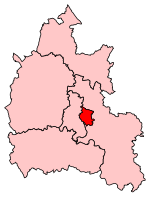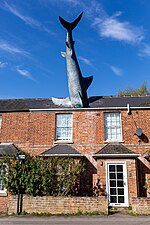Rock Edge
Geological Conservation Review sitesLocal nature reserves in OxfordshireSites of Special Scientific Interest in Oxfordshire

Rock Edge is a 1.7-hectare (4.2-acre) geological Site of Special Scientific Interest in Oxford in Oxfordshire. It is a Geological Conservation Review site and a Local Nature ReserveThis site exposes limestone rich in coral called Coral rag, laid down when the area was under a warm, shallow sea, similar to the Bahama Banks today. It is rich in fossils derived from the coral reefs. It dates to the Upper Jurassic, around 145 million years ago.
Excerpt from the Wikipedia article Rock Edge (License: CC BY-SA 3.0, Authors, Images).Rock Edge
Rock Edge, Oxford Headington
Geographical coordinates (GPS) Address Nearby Places Show on map
Geographical coordinates (GPS)
| Latitude | Longitude |
|---|---|
| N 51.754 ° | E -1.205 ° |
Address
Rock Edge Local Nature Reserve
Rock Edge
OX3 8NE Oxford, Headington
England, United Kingdom
Open on Google Maps










